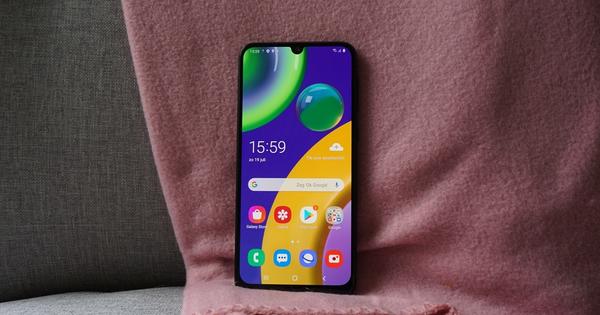While almost everyone is now using Microsoft Office, Microsoft still sees plenty of opportunities to further improve Office and mainly uses Office to push more and more users into the cloud. But is Office 2016 worth the cost of the upgrade or are you better off with an alternative?
One press release, did Microsoft Netherlands not pay more attention to the release of Office 2016. Afraid to disrupt the attention around Windows 10 or do they just not have much to report? Also read: This is how you collaborate online.
It seems the latter. Office 2016 is not a big new Office, but an extremely modest upgrade. Illustrative is the 'reviewer's guide' in which Microsoft describes the new features in Office 2016. Half of the 27-page document contains screenshots and functionality that is actually from Windows 10. The same guide for Office 2010 was 100 pages and that of Office 2013 was still 45.
Still, this does not make Office 2016 an update that you can just skip. Just like Windows, Office will also be a product without major new versions. Microsoft wants to continuously renew and adapt it, so next month there will be a new Office and the month after that.
If you always want all the new features, you have to switch to Office 365, the subscription version of Microsoft Office. Microsoft is also going to release new features that are only available to Office 365 customers. Office 365 will also get most applications, except Word, Excel, PowerPoint and OneNote, Outlook, Publisher and Access (but still no Visio and Project). You can also install the applications on a maximum of five PCs or Macs within the household. You can switch endlessly, because you can deactivate an installation online yourself and then install it again on another device. You can also switch unlimitedly between Windows and Mac, a clear advantage over a regular retail version of Office that obliges you to choose one of these two when purchasing.
Office 2016
Where Windows struggles to spread its wings to devices other than the PC, Office has long since succeeded. Many smartphones or tablets contain at least the Word or Excel app, regardless of whether it is an iOS or Android device. And Office works well on OS X, too. This time, Apple users got Office 2016 even earlier than Windows users, and their version of Office is more than ever equivalent to Windows. For the first time there is a real OneNote for the Mac and for 365 subscribers also a real Outlook. For Mac users, upgrading to Office 2016 is the obvious choice.
To collaborate
Upgrading is less obvious for Windows users. The main new feature in Office 2016 is document collaboration. This is possible in Excel, OneNote, PowerPoint and Word, but only in Word can you see the changes that someone else makes directly in your version of the document. Excel and PowerPoint do not yet master this, while we had expected that, especially because the web apps from Office do support it (just like the web apps from competitor Google). To collaborate on a document, it must be stored on SharePoint Online or OneDrive. As Microsoft itself says, when collaborating on a document, version history is very important. Unfortunately, this only works in combination with SharePoint Online and not with OneDrive, which is not based on SharePoint technology.
Incidentally, users of OneDrive (including Office 365 subscribers) were unpleasantly surprised at the beginning of November when Microsoft cut the free storage space on OneDrive. Previously unlimited for 365 users, it is now limited to 1 TB. This will still be more than enough for most users, but it is disadvantageous for those who need more space, because Microsoft has significantly increased the prices for extra storage on OneDrive. As a result, storage at Microsoft is twice as expensive from 2016 as in Apple's iCloud. After years of encouraging everyone to put everything in the cloud, Microsoft is now showing itself to be a less reliable partner.
Office 365
Judgment
****
Price
€10 per month
Website
www.office.com
Office 2016 for home and students
Judgment
***
Price
€ 149,-
Website
www.office.com
Comparison with old Office versions
Office 2007 and 2010
Office 2007 was the first version of Office to use the Ribbon instead of the traditional menus at the time. The change initially made many users shudder, but it turned out to work well in the end. The Ribbon in Office 2007 and 2010 is less extensive and also less intelligent than in later versions of Office. So you have to search and click more often to find the function you want. To the dismay of many users, Outlook was gone in the consumer versions of Office 2007. They used Outlook for e-mail, contact management and as a calendar, and were suddenly forced to look for another program for that. OneNote, a note-taking program, was added to Office 2007, but that was still in its infancy.
Two programs that were still in the suite at the time, InfoPath and Groove (named SharePoint Workspace in 2010), never made the transition to Office 2013 (and then 2016). However, you do not miss them, while conversely (when you still use Office 2007 or 2010) you do not miss a lot of functionality compared to Office 2016. It is mainly details that are missing, there are fewer options and it is all a bit less easy. OneDrive is really missing, but it can easily be installed separately.
Office 2007 and 2010 run smoothly on Windows 10. Please note: the standard support of both suites has expired and in a year's time there will be no more security updates for Office 2007. That is in any case a good time for Office 2007 to stop using it.
Office 2013
The difference between Office 2016 and Office 2013 is possibly even smaller than that of Office 2010 and 2007. There are the new light and dark gray color schemes that allow you to customize the colors of the Office interface, the new "Specify what you want do" search option to search the Office features, and our favorite, the list of most recently opened files (including those in other applications) to attach to an email message. Conversely, innovations you hoped for have still not come. For example, Office synchronizes the list of recently opened documents between different devices, but not, for example, the personal adjustments to the ribbon or the Quick Access toolbar.

